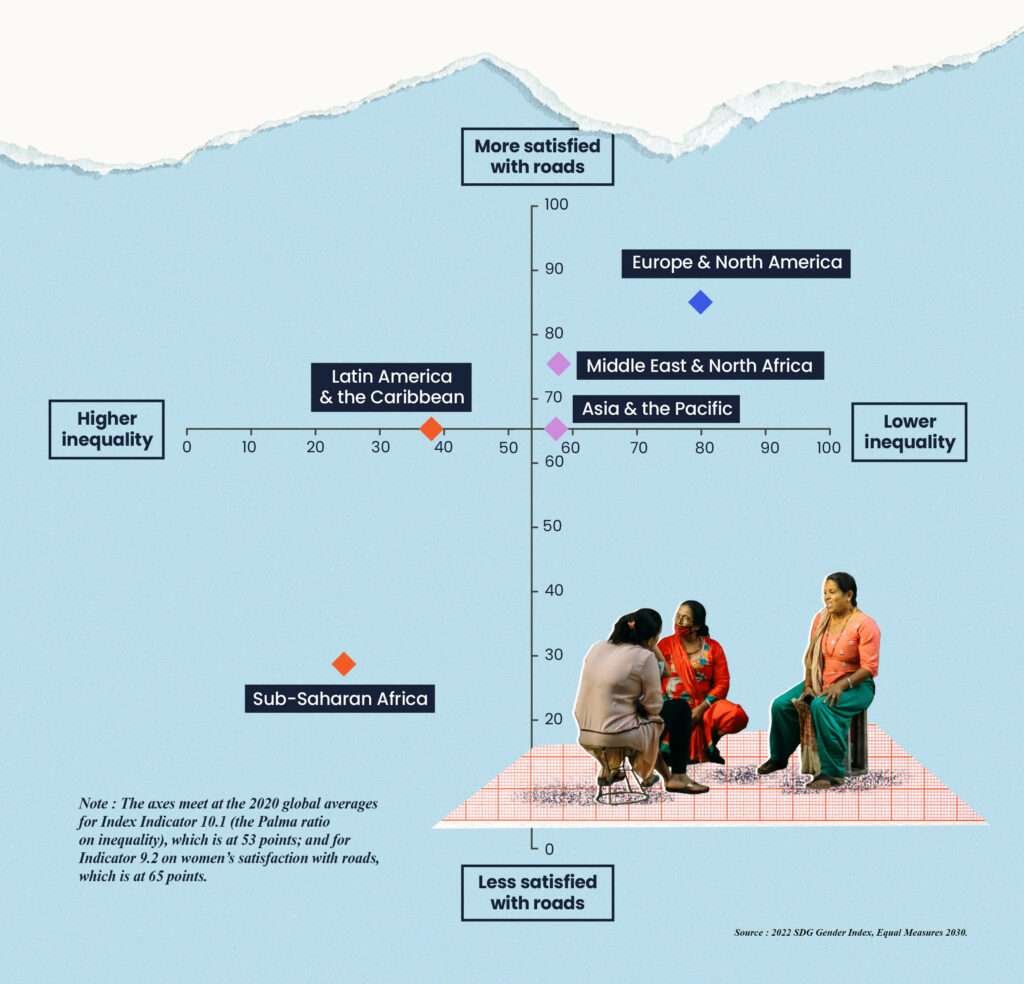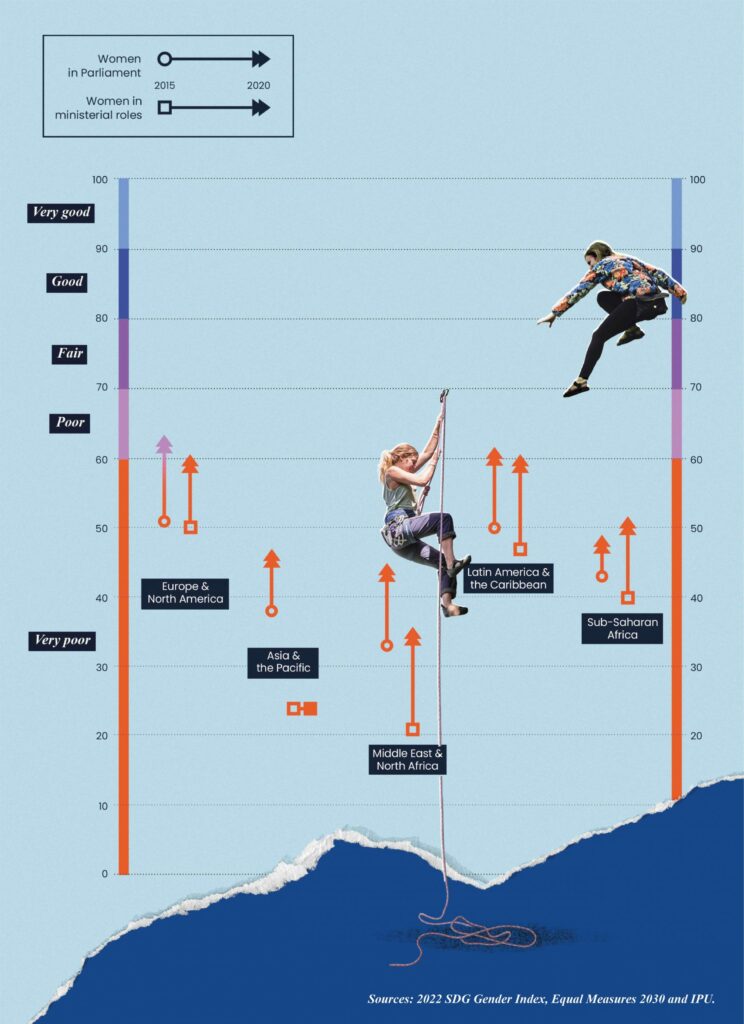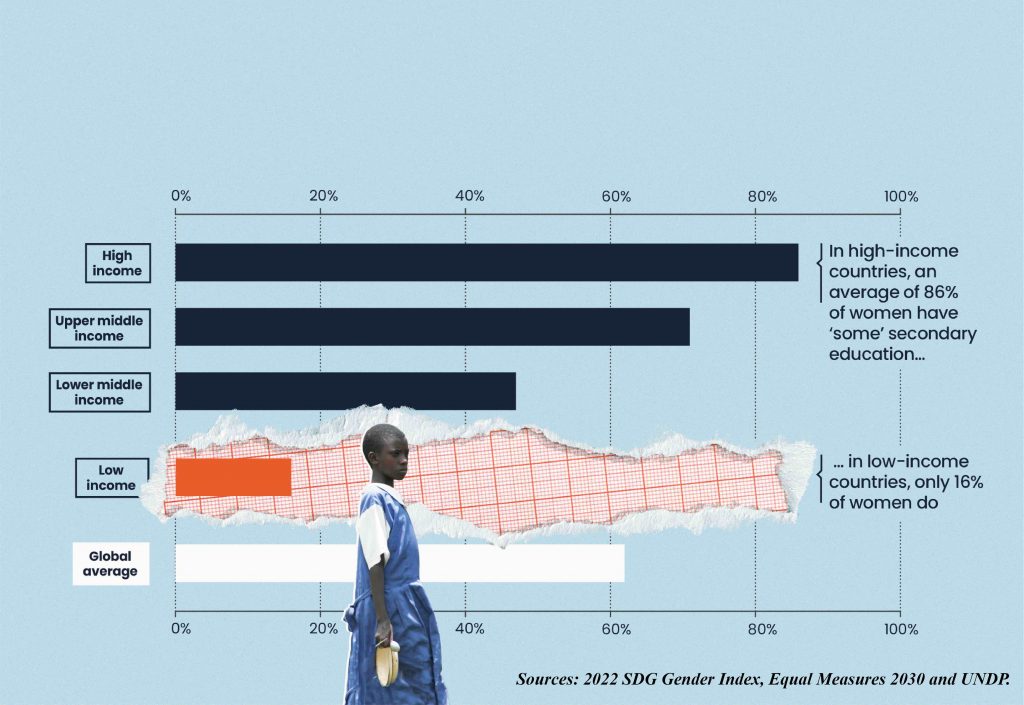A Feminist Blueprint to Achieving Gender Equality
Lessons learnt from the 2022 SDG Gender Index as to how we can achieve the 2030 Agenda
The 2022 SDG Gender Index provides a snapshot of where the world stands on the vision of gender equality embedded in the 2030 Agenda. Unfortunately, it reveals that even before the pandemic, the world was not on track to achieve this vision; the progress that had been made was too slow, too fragile and too fragmented.
Since then, Covid-19 has dramatically impacted all sectors of life, disrupting economies, claiming lives, and building barriers to basic rights such as education, welfare and security. It’s difficult to analyse the full impact – particularly as data gaps hide the experiences of the most vulnerable and hard-hit – yet we know from the United Nations (UN) Secretary General, António Guterres, “that years or even decades of development progress have been halted or reversed” as a result.
Whilst the Index showcases where progress is (and isn’t) happening, it also pulls out the crosscutting themes that often appear in the countries and regions that are making this progress. Drawing on this and the experience of our ‘global to local’ gender equality partnership, we outline six recommendations that, taken together, provide a blueprint for change that may ease the impacts of COVID-19 whilst getting us back on track to achieve the 2030 Agenda.

We must remove or reform discriminatory laws whilst also applying laws that ensure gender equality. The implementation of these laws must be monitored and enforced, which is possible when they are bolstered by political will and matched by policy and budget commitments, public campaigns and steady shifts in gender norms.
Countries that make good use of laws to facilitate women’s economic inclusion, for example, have been found to have better health, nutrition and educational outcomes for women and their families, more resilient employment for women and more women in their parliaments.


Gender-responsive budgets, progressive taxation and strong investment in public services are needed to fund the social transformation for gender equality. As countries recover from COVID-19, investments in the care economy should be prioritised over austerity policies which are less effective in reducing public debts, whilst also ensuring that unpaid care work is visible in national statistics and that publicly funded care services are affordable and accessible.
Attention should also be turned toward the great losses from tax exemptions that favour the richest, cross-border tax abuse and evasion, as well as public funds that are diverted for military expenditure instead of social infrastructure.
Index data reveals that public investment reduces income inequality and that there is a strong need for countries to disaggregate public budgets by gender, age, income and region.

The participation of girls and women in public life is not only a core human right but it is also essential for countries’ social and economic health. Yet gender norms about leadership, as well as poverty, care burdens and violence against female public figures often exclude women and girls from decision-making spaces.
A study in India finds that the presence of female leaders in village councils influenced girls’ aspirations, parents’ expectations for their daughters, and how long girls stayed in school. The visibility of women in public office also shifts people’s perceptions about leadership – a step towards ending the gender norms that hold girls and women back.

It is also essential to address structural inequalities and discrimination. We can do this through easing care burdens to allow women the freedom to take on leadership roles, as well as investing in education and training on civic participation, mentorship schemes and programmes that enhance girls’ aspirations.

Closing gender data gaps is vital in monitoring progress and influencing the decisions of policy makers. We must close gaps by increasing the supply of data (especially data that allows for intersectional analyses) whilst also increasing capacity for the use of this data.
This involves engaging feminist organisations in the production, interpretation and storytelling of data, ensuring they have access to the data needed to hold policy makers accountable and influence decision-making. On the other side, norm changes are also needed to ensure policy makers value gender data and gender targets as essential and not just desirable.

Feminist movements play a critical role in the promotion of gender equality and have been key to much of the progress made so far. Yet these movements and organisations remain drastically under–funded and under-supported.
What can donors do to support them? Funding needs to be increased AND transformed. Donor practices should be adapted to meet the needs and realities of these organisations, involving them in the design of financing mechanisms and ensuring they receive direct, core, flexible and sustainable funding.
What can governments do? Governments must support the safety of feminist activists, protecting their human rights and security whilst also removing barriers to collective action. The voices, expertise and data of feminists movements and organisations must also be included and valued in decision and policy making spaces.

Girl- and youth-led organizations are powerful advocates for social, climate and gender justice, yet they remain under-valued and overlooked in decisions that affect them. To empower young girls and women we must tackle child marriage, as our partners in India are doing, as well as barriers to education as our partners FAWE and IPBF do.
To ensure that gender equality is resilient and the rights of girls and young women do not backslide, programmes, policies and laws need to be designed with and for girls and young women, and there must be increased funding for girl- and youth-led organisations and young advocates.

The 2022 SDG Gender Index reveals stark findings on the lack of progress made since the Sustainable Development Goals were established. But it also reveals stories of hope, and the crucial building blocks that can set us on a path not just to achieve the 2030 Agenda but also to ensure an equality that is resilient, sustainable and, ultimately, unstoppable!
Read the full 2022 SDG Gender Index here or discover the data behind it here.




